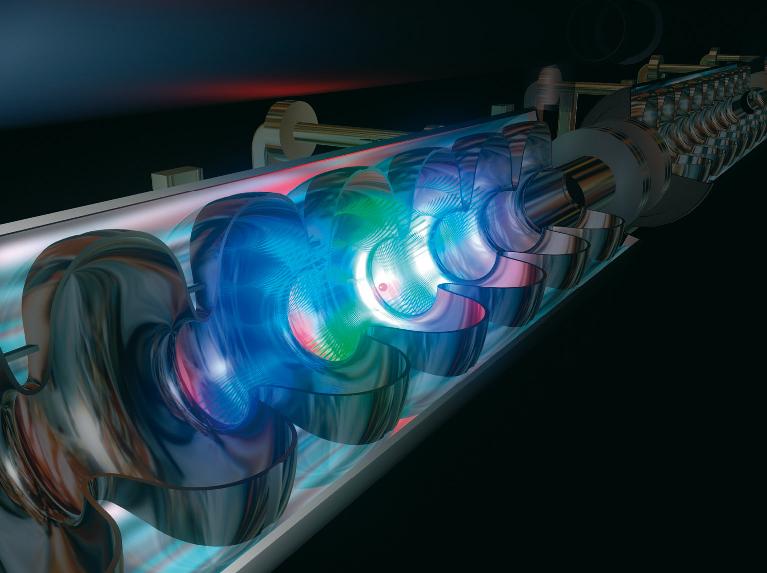Laser warfare takes to the high seas

A new type of laser weapon system touted as the holy grail of military lasers took a step closer to reality last week when Boeing Directed Energy Systems announced the successful completion of the initial design of the U.S. Navy's Free Electron Laser (FEL).
The shipboard FEL will focus a lethal 100-kilowatt beam at surface and air threats, future anti-ship cruise missiles or a swarm of small boats. FELs are electrically generated so can draw on the power of the ship to provide a virtually unlimited magazine with speed-of light delivery for a wide range of missions. In this way, it will provide U.S. ships with a more powerful means of self-defense.
"The successful completion of this preliminary design review is an important milestone in developing a weapon system that will transform naval warfare," said Gary Fitzmire, vice president and program director of Boeing Directed Energy Systems.
For it to become real, however, will require several milestones. The Navy's design approval is a key step toward building an FEL prototype for realistic tests at sea. The next step is for Boeing to detail the design and build the system, which is expected to cost $163 million. Future considerations include ship integration and beam control. As Wired puts it; "the future Navy will need a fleet of futuristic, fully electric ships that generate enough power for these next-generation weapons."
There is no date pegged for when it will appear in active service.
What is a Free Electron Laser?
FELs have the widest frequency range of any laser type and provide intense beams that can be tuned to a precise wavelength, a capability not shared with conventional lasers. This is because conventional lasers are limited in the wavelength of light they emit by the source of the electrons (such as a gas or crystal) used within the laser. In the FEL, electrons are stripped from their atoms and then whipped up to high energies by a linear accelerator. The lasing medium moves freely through a magnetic structure, hence the term free electrons. And the wavelength of the light emitted can be readily tuned by adjusting the energy of the electron beam or the magnetic field strength of the undulators.
Here is the vision from the Office of Naval Research:
This revolutionary technology allows for multiple payoffs to the war fighter. The ability to control the strength of the beam provides for graduated lethality, and the use of light vice, an explosive munition, provides for low per engagement and life cycle costs. In fact, it provides an effective alternative to using expensive missiles against low value targets. Not worrying about propulsion and working at the speed of light allows for precise engagement and the resulting low collateral damage. Speed-of-light engagement also allows for a rapid reaction to moving and/or swarming time critical and swarming targets.
Related reading:
